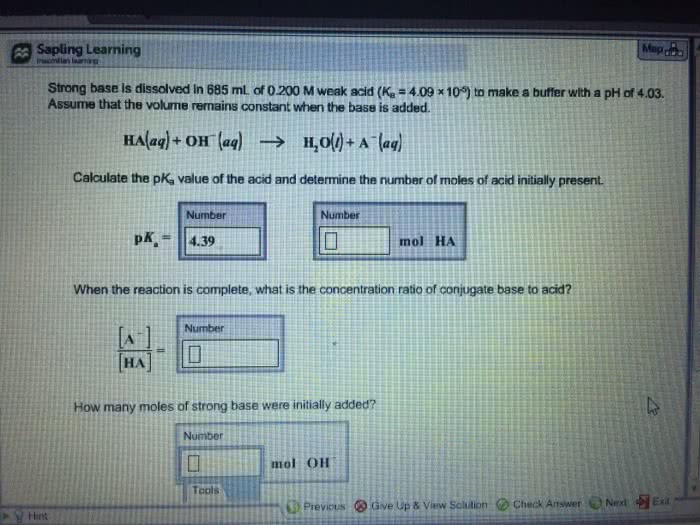Chemistry 1302A/B Chapter 1.4: 1.4 - Buffer Solutions
Document Summary
Introduction: consider the behaviour of a weak acid: In addition, the weak species and its conjugate partner must both be present in significant amounts. 0. 130m aqueous ammonia, nh3: the ammonia is a weak base and the ammonium ion, nh4+ (from the nh4cl) is its, a solution of aqueous ammonia, nh3, will reaction with the strong acid, hno3, according. !nh3(aq) + h3o+ because the product nh4+ is the conjugate acid of the weak base. Nh3(aq) + h2o(l) nh4 (aq) +oh (aq) H3o+ (for an acid buffer) and oh- (for a base buffer) must always be in concentration the parent and conjugate units, m: for a weak acid buffer, the equilibrium expression becomes: [h 3o+](moles of conjugate base) (moles of parent acid) !hcl(aq) + naoh(aq) h2o(l) + nacl(aq: since both na+ and cl- are spectator ions, the solution is neutral (ph 7)


